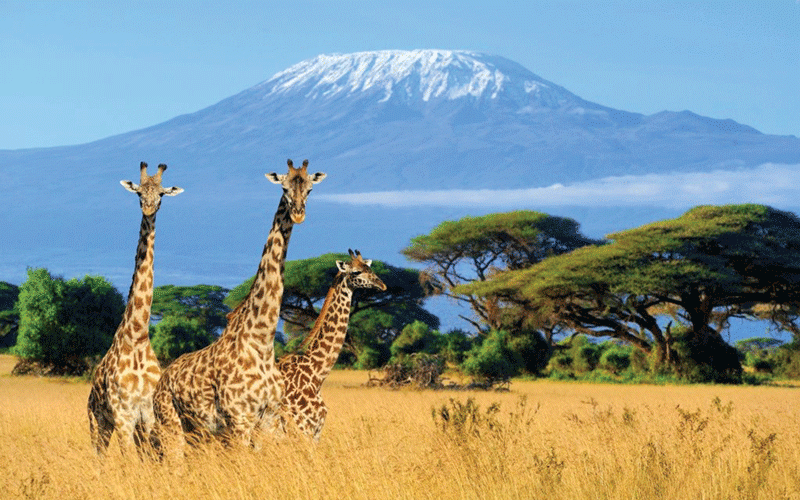
THIS week's column is going exotic. Once upon a time Yours Truly wrote about Africa’s top 10 bridges, which were a game changer in the country's tourism industry.
This week we dwell on the world's fourth highest mountain situated in East Africa and is considered the highest free-standing mountain in the world.
And this is none other than Mount Kilimanjaro whose “tangible” interesting facts are second to none, but also worth sharing with travelling and touring enthusiasts.
Here we go, but we commence with a slight digression.
Olduvai Gorge, situated in Tanzania, is considered as home of human ancestry as well as the evolution of mankind whose offspring were later considered to have settled all over the world.
This tourist attraction gorge is located in the eastern Serengeti Plain, near northern Tanzania, in East Africa. The gorge is also nicknamed the “Cradle of Mankind” because it is believed to be the site where paleoanthropological remains of the earth's first human beings were found and recorded.
This place gave an impetus to archaeologists as well as palaeontologists' research info on how the human race came into being.
It is also home to the oldest human skulls even though Ethiopia rules the roost with the latest discovery dating back to about 230 000 years ago.
- Juntal leads rhumba transformation
- Chics’ Galaxy: Faith Candy celebrates birthday in Zanzibar
- Uebert Angel selling private island in Lake Victoria for US$4.7 million
- Juntal leads rhumba transformation
Keep Reading
Besides being the “Cradle of Mankind”, Tanzania is well-known for its natural tourist attraction places such as the Serengeti National Park, Ngorongoro Crater, Tarangire National Park, Lake Manyara National Park, Arusha National Park, Southern Parks, Selous Game Reserve and Ruaha National Park, among a host of others.
Serengeti national park is considered the biggest and home to numerous wildlife species such as elephants, lions, leopards, rhinos, buffalos, wildebeests, zebras, antelopes, giraffes, hippos, waterbucks, hartebeests, hyenas and warthogs, among others.
However, Selous Game Reserve is reported to be Africa’s largest protected game reserve, spanning 54 600 square kilometres and consisting of a vast wilderness of forests, grassy plains, mountains, and open woodlands.
Mount Kilimanjaro, whose height is 5 895m, is the continent's highest mountain and world's fourth after Mount Everest, (8 850m), Aconcagua (6 962m) in South America and Denali (6 190m) in North America.
This mountain has three volcanic cones, Mawenzi, Shira and Kibo. While the first two are reported to be extinct, Kibo, the highest peak, is dormant and there are chances that it could erupt again.
It is said the most recent volcanic activity happened about 200 years ago while the last major eruption was 360 000 years ago.
Some of the interesting facts concerning this gigantic mountain include reports that an average of 25 000 people attempt to climb to the summit of Mt Kilimanjaro annually and an average of two-thirds are successful.
Altitude-related problems are the most common reasons climbers turn back.
The fastest verified ascent of the mountain took place in 2001 when Italian Bruno Brunod reached the summit in five hours 38 minutes and 40 seconds. The fastest roundtrip was accomplished in 2004, when local guide Simon Mtuy went up and down the mountain in eight hours 27minutes and four seconds.
The mountain’s snow caps are reported to be diminishing, having lost more than 80% of their mass since 1912. In fact, they may be completely ice free within the next decade according to scientists.
The most interesting and fascinating fact concerning this particular mountain is when Bernard Goosen used his wheelchair in 2003 on an arduous nine-days climb to reach the summit. Four years later he repeated a similar feat and this time around it lasted six days.
Goosen was born with cerebral palsy and could not move without his wheelchair. However, due to his passion and determination he used a modified wheelchair.
The mountain is also home to Kilimanjaro National Park just like our Mount Inyangani game reserve situated in the eastern border highlands.
Food for thought to local tourism players.
Till we meet again in the next column.
- Comments always welcome on: [email protected] or Twitter@DubeBurzil











